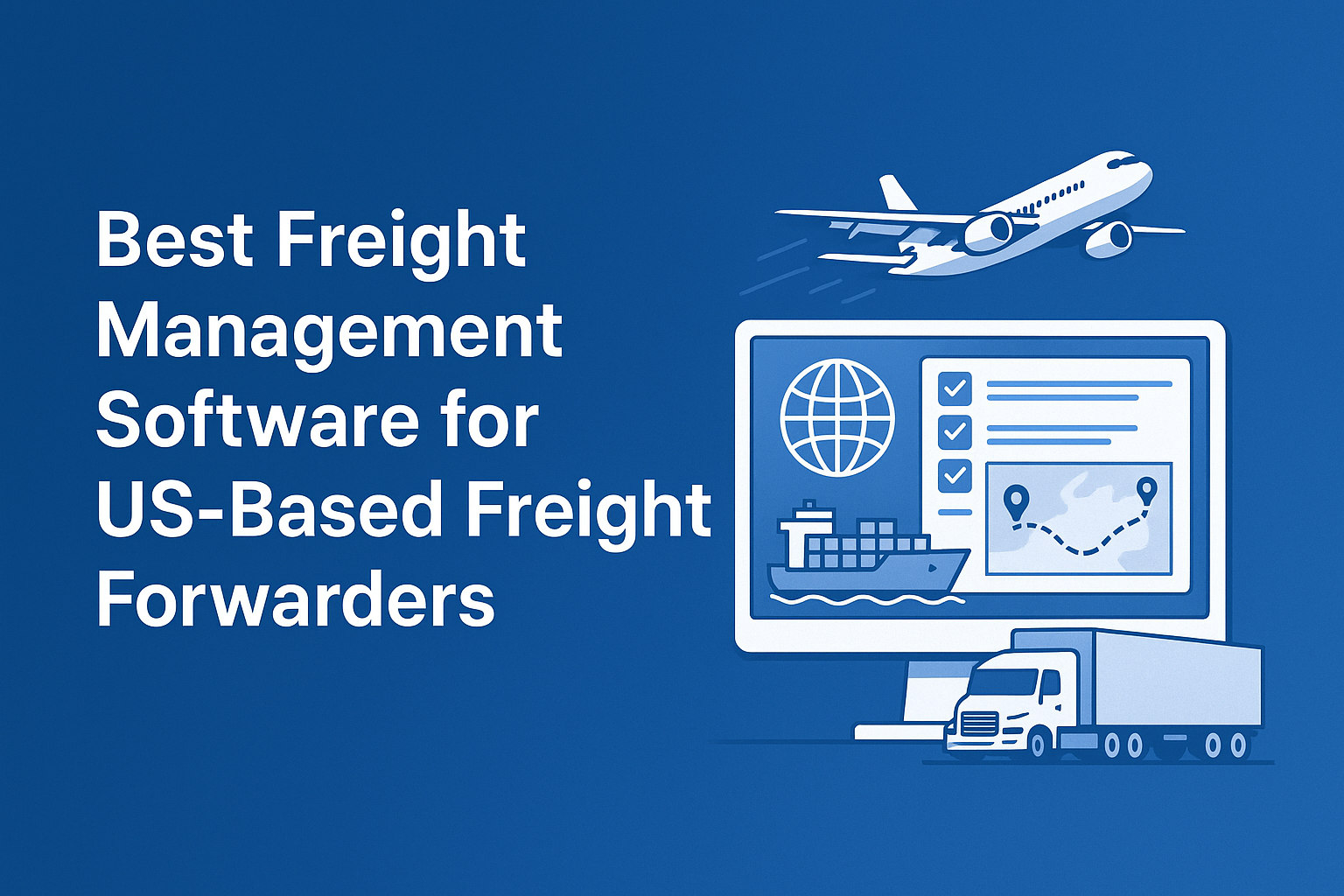Best Freight Management Software for US-Based Freight Forwarders
Looking for the best freight management system? Explore top TMS for freight forwarders in the U.S. and modernize your freight forwarding operations.

Freight forwarding in the United States is no longer just about moving goods. It’s about managing complexity — across modes, partners, regulations, and customer expectations. With rising competition, tighter compliance, and growing demand for real-time updates, US-based freight forwarders need more than manual processes and legacy tools to stay ahead.
That’s why many are turning to modern freight forwarding software and intelligent freight management systems — not just to streamline operations but to unlock true scalability, visibility, and control.
Why Freight Management Systems Are Essential Today
U.S. freight forwarders juggle a unique mix of challenges:
- Air, ocean, and road shipments across domestic and global lanes
- Tight U.S. customs and compliance regulations
- Dynamic freight rates and capacity shifts
- Disparate teams managing bookings, billing, and tracking
- Demands for digital documentation and real-time visibility
Without a unified freight management system, forwarders risk delays, missed opportunities, and compliance failures.
Whether you’re a mid-sized player or a growing 3PL, the right TMS for freight forwarders helps you unify operations, reduce manual work, and improve decision-making across the board.
What Makes the Best Freight Forwarding Software?
Here’s what U.S.-based freight companies should look for when evaluating a modern freight forwarding software platform:
1. Multimodal Freight Management
The software must handle air, sea, and road freight operations — all in one place. From booking to delivery, visibility and control should never drop.
2. U.S. Customs & Regulatory Compliance
Built-in support for CBP, AMS, ISF, and other U.S. compliance frameworks is critical. Forwarders should be able to digitally file and track entries without switching platforms.
3. Integrated Billing & Freight Accounting
A good freight management system must connect operations with accounting. Automated billing, profit tracking, tax compliance, and multi-currency support are must-haves.
4. Real-Time Visibility
Track every shipment at every stage — with integrations to shipping lines, airlines, trucking partners, and customer portals.
5. CRM and Sales Enablement
Sales and operations don’t live in silos anymore. A top freight forwarding software should allow you to manage rate quotes, follow-ups, and customer insights from the same platform.
6. Cloud-Based Access with High Security
With distributed teams and remote work, a secure, cloud-native system ensures seamless access and real-time updates — without compromising data integrity.
7. Scalability and Branch Coordination
Support for multiple branches, users, regions, and currencies is vital as your business expands. A scalable TMS for freight forwarders means you don’t have to rebuild your tech stack every time you grow.
Freight Management Software vs Traditional TMS
Traditional TMS for freight forwarders often focus only on transport execution — bookings, carrier contracts, and route planning. While useful, they typically miss out on the broader freight forwarding needs like:
- Multi-leg international shipment handling
- Customs documentation and compliance
- Integrated sales, billing, and CRM workflows
- Partner and customer communication
In contrast, modern freight forwarding software offers an end-to-end solution — from quote to invoice, from port to door. It’s not just about moving freight. It’s about managing every part of the process intelligently.
Key Benefits for U.S. Freight Forwarders
Implementing a robust freight management system results in clear operational and financial gains:
- Accelerated Processes: Automation reduces turnaround time across documentation, invoicing, and communication.
- Better Cash Flow: Accurate and timely billing ensures faster collections and reduced revenue leakage.
- Zero Silos: Everyone — operations, sales, accounts, compliance — works on the same real-time data.
- Stronger Compliance: Regulatory filings and audit trails are automatically tracked and archived.
- Improved Customer Satisfaction: Real-time updates and transparent communication improve trust and retention.
Choosing the Right Freight Software for Your Business
There are many freight forwarding software options in the U.S., but here are five questions to help you find the right fit:
- Does the system cover end-to-end operations — from shipment handling to billing and compliance?
- Is it designed specifically for freight forwarders, not just general logistics or trucking?
- Can it integrate with U.S. customs, airlines, ocean carriers, and banking systems?
- Does it provide real-time control and visibility across branches and partners?
- Is the provider experienced in the freight domain with U.S.-specific expertise?
Avoid generic tools that offer only partial solutions. The best TMS for freight forwarders is the one that understands your workflows and evolves with your business.
Final Thoughts
U.S. freight forwarding businesses are entering a new era—one defined by speed, integration, and digital strength. In this landscape, outdated systems and fragmented tools are no longer sustainable.
A modern freight management system built for forwarders does more than digitize operations. It gives you the agility to scale, the control to stay compliant, and the intelligence to stay ahead of market shifts.
For freight forwarders ready to move beyond spreadsheets and disconnected apps, adopting intelligent, cloud-based freight forwarding software isn’t a trend—it’s a strategic move toward sustainable growth.